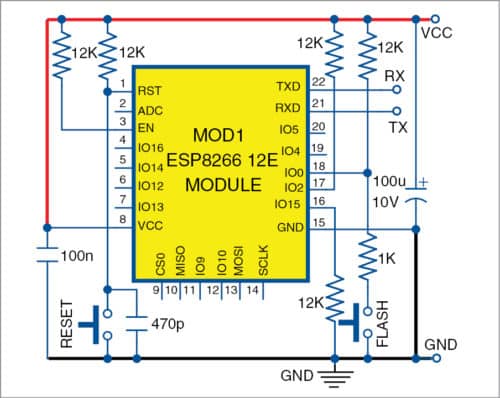Resistors, Capacitors, Voltages, Oh My! (Flash ESP8266-12-E)
I'm trying to find out if I actually have what I need to flash my ESP8266-12-E, or if I need to buy some components or even a flashing "cape" (yeah, that's BeagleBone terminology, I have no idea why I used it).
I'm trying to follow this tutorial, particularly this circuit diagram:

These are my questions so far (I may have more later):
I'm trying to follow this tutorial, particularly this circuit diagram:

These are my questions so far (I may have more later):
- Can I use surface-mount resistors and capacitors? If so, how do I tell what capacitance a surface-mount cap is by the markings, and how do I use them in my breadboard? Solder leads to them?
- Assuming I can't find the right cap, what kind of substitutions can I make? Can the Farads be different, or just the Volts? Over or under?
- I take it from this that my pull-up and pull-down resistors can be anywhere between 10k to 100k (Ohms). Is it different for this board? I can't seem to calculate it myself without knowing more about the internal workings of the board.
- I have a 3.7V LiPo battery, is that close enough to use to power the board?
- Crazy shot in the dark, but can I skip the whole riot by buying a [url=]nano[] and attaching my board to it somehow to flash? if so, are the attachments one-to-one or how do I attach it?